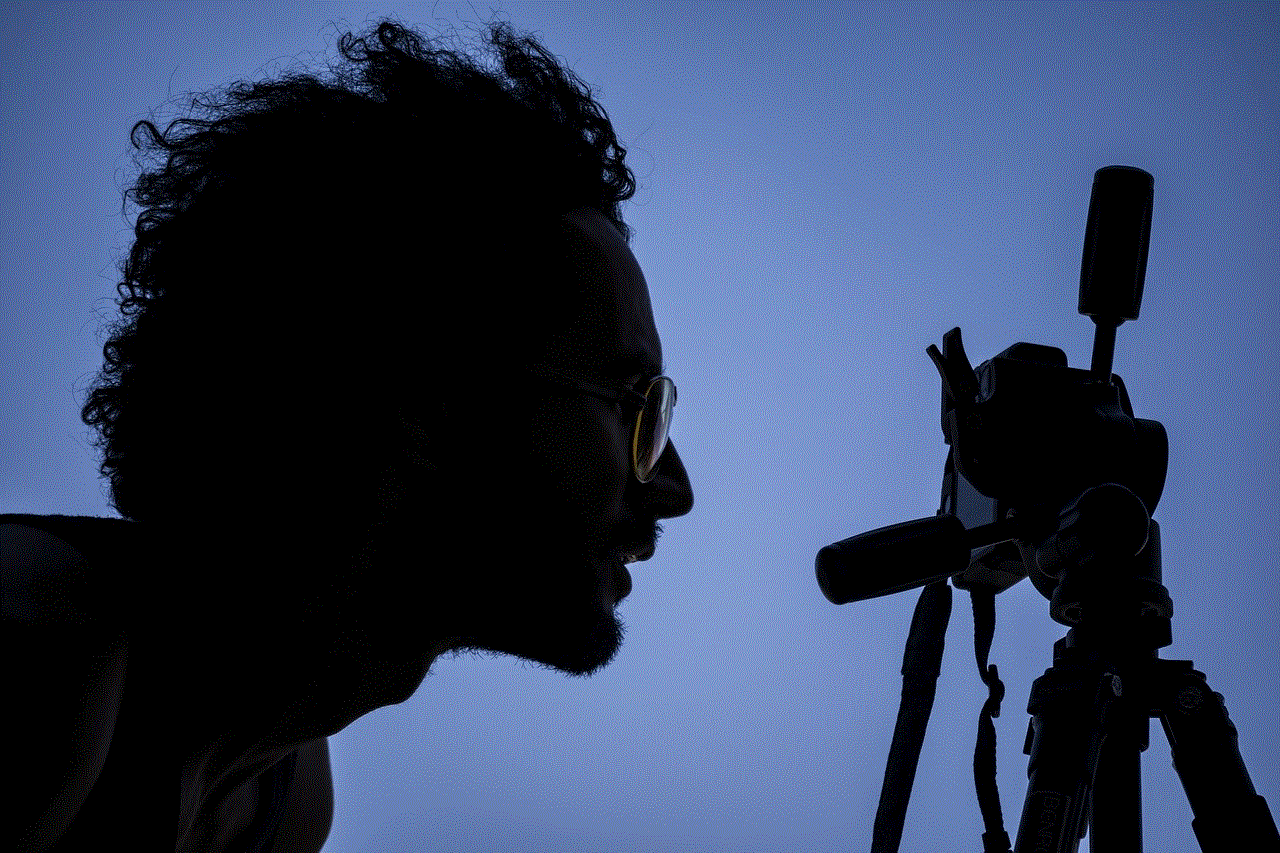someone keeps trying to log into my snapchat
In today’s digital age, social media has become a vital part of our daily lives. From facebook -parental-controls-guide”>Facebook to Instagram , we are constantly connected to our friends and family through various platforms. One of the most popular social media apps is Snapchat, known for its disappearing messages and fun filters. However, with its increasing popularity, there has also been a rise in cybersecurity threats. One of the most concerning issues faced by Snapchat users is someone constantly trying to log into their accounts. In this article, we will explore the reasons behind this phenomenon and provide you with tips to keep your Snapchat account safe.
First and foremost, let’s understand why someone would want to log into your Snapchat account. The most common reason is to gain access to your personal information, such as your contacts, photos, and videos. This information can then be used for malicious purposes, such as identity theft or cyberbullying. Another reason could be to impersonate you and send inappropriate messages to your contacts, tarnishing your reputation. Moreover, hackers can also use your account to send spam messages or links to phishing websites, putting your friends and family at risk.
Now that we know the potential dangers of someone trying to log into your Snapchat account, let’s delve into the ways in which they can do so. The most common method used by hackers is known as brute force attacks. This involves using a computer program to guess your password by trying different combinations of characters until they find the correct one. Another way is through phishing, where hackers create fake login pages that look identical to the original one, tricking users into entering their login details. They can also use malware or keyloggers to obtain your login information.
So, what can you do to protect your Snapchat account from these threats? The first and most crucial step is to have a strong and unique password. Avoid using common words or personal information that can be easily guessed. Instead, use a combination of upper and lower case letters, numbers, and special characters. It is also recommended to change your password regularly to ensure the safety of your account.
Another effective measure is to enable two-factor authentication. This adds an extra layer of security by requiring a code sent to your phone or email to log into your account. This way, even if someone manages to guess your password, they won’t be able to access your account without the code. You can enable this feature in your Snapchat settings.
Furthermore, it is essential to be cautious of suspicious emails or messages claiming to be from Snapchat. These could be phishing attempts, as mentioned earlier, trying to trick you into giving away your login information. Always verify the authenticity of such messages by contacting Snapchat directly through their official website or app.
In addition to these preventive measures, it is crucial to regularly check your account activity. Snapchat allows you to view the devices and locations from which your account has been accessed. If you notice any suspicious activity, such as logins from unfamiliar devices or locations, you can take immediate action by changing your password and logging out of all devices.
It is also important to keep your Snapchat app updated to the latest version. Developers often release updates to fix any security vulnerabilities, so make sure to install them regularly. You can also enable the “login verification” feature in your settings, which notifies you whenever someone logs into your account from a new device.
Moreover, it is crucial to be mindful of the information you share on your Snapchat account. Avoid posting personal information such as your phone number, address, or school name. This information can be used by hackers to gain access to your account or even track you down. Also, be cautious of the photos and videos you share, as they can be saved and used against you.
If you suspect that someone has gained access to your Snapchat account, act fast. Change your password immediately and log out of all devices. You can also report any suspicious activity to Snapchat through their support page. Additionally, if you have been a victim of cyberbullying or harassment through your Snapchat account, do not hesitate to seek help from a trusted adult or report the issue to Snapchat.
In conclusion, someone constantly trying to log into your Snapchat account is a serious concern that should not be taken lightly. With the rise in cyber threats, it is crucial to take necessary precautions to protect your personal information and online presence. By following the tips mentioned above, you can ensure the safety of your Snapchat account and enjoy using the app without any worries. Remember, prevention is always better than cure, so stay vigilant and stay safe!
hacker hundreds verizon
In July 2020, news broke that a group of hackers had successfully breached the systems of telecommunications giant Verizon, compromising the personal information of hundreds of customers. The attack, which was reportedly carried out by a group known as “Hacking Team,” is just the latest in a string of high-profile cyber attacks targeting major corporations. This incident has once again raised concerns about the security of our personal data and the vulnerability of our digital infrastructure.
Verizon, one of the largest telecom companies in the world, provides services to over 100 million customers, including wireless, internet, and TV services. With such a vast customer base and a large presence in the digital landscape, the company is a prime target for hackers looking to steal sensitive data. The breach, which was reported to have occurred in April 2020, was not made public until July, leaving customers exposed to potential identity theft and financial fraud for months.
According to reports, the hackers gained access to the Verizon systems through a known vulnerability in the company’s customer service portal. This allowed them to access the personal information of customers, including names, phone numbers, and account PINs. The breach also exposed the personal data of Verizon employees, including network security codes and other sensitive information. It is unclear how many customers were affected by the attack, but it is estimated to be in the hundreds.
This incident once again highlights the importance of cybersecurity and the need for companies to constantly update and strengthen their systems to protect against potential attacks. In today’s digital age, where personal data is a valuable commodity, companies must take all necessary precautions to secure their customers’ information. However, it seems that even the biggest and most technologically advanced companies are not immune to cyber attacks.



Verizon, like many other companies, invests millions of dollars in cybersecurity every year. They have a team of experts dedicated to monitoring and protecting their systems from potential threats. So how did a group of hackers manage to breach their systems? It is believed that the attackers exploited a known vulnerability in the company’s customer service portal, which was not adequately patched. This highlights the importance of regularly updating and patching software to prevent such attacks.
The attack on Verizon is just one of many recent high-profile breaches that have exposed the vulnerability of our digital infrastructure. In 2017, credit reporting agency Equifax suffered a massive breach that exposed the personal information of over 147 million people. In 2019, Capital One, a major US bank, was hacked, exposing the personal information of over 100 million customers. These incidents show that no company is immune to cyber attacks, and the consequences can be devastating.
The aftermath of the Verizon breach has been a cause for concern for both the company and its customers. The company has faced criticism for not disclosing the breach sooner, leaving customers vulnerable for months without their knowledge. This delay also raises questions about the effectiveness of their security systems and their ability to detect and respond to threats in a timely manner. Verizon has apologized for the incident and has promised to take all necessary measures to ensure the security of their systems going forward.
For customers, the aftermath of the breach has been a nightmare. Many have reported unauthorized charges on their accounts, while others have had their personal information used to open fraudulent accounts. The breach has also exposed customers to potential identity theft, which can have long-lasting consequences. This incident once again highlights the need for individuals to be vigilant about their personal information and take necessary precautions to protect themselves from potential fraud.
In the wake of the breach, Verizon has taken steps to mitigate the damage and restore the trust of their customers. They have offered free credit monitoring services to those affected by the breach and have encouraged customers to change their account PINs. They have also implemented additional security measures and have promised to improve their response to potential threats in the future. However, the damage has been done, and it will take time for the company to regain the trust of its customers.
The Verizon breach has also raised questions about the role of government in protecting our digital infrastructure. With the increasing frequency of cyber attacks, many are calling for stricter regulations and laws to hold companies accountable for the security of their systems. The government also has a role to play in funding research and development of new technologies to improve cybersecurity and protect against potential threats.
In conclusion, the recent hack on Verizon has once again highlighted the need for improved cybersecurity measures and the vulnerability of our digital infrastructure. It serves as a reminder that no company is immune to cyber attacks, and constant vigilance is necessary to protect our personal information. Companies must invest in robust security systems and regularly update and patch their software to prevent potential breaches. As for customers, it is crucial to stay vigilant and take necessary precautions to protect ourselves from potential fraud. Only by working together can we ensure a safer and more secure digital landscape.
instagram avisa si tomas screenshot a la historia
Instagram ha sido una de las redes sociales más populares en los últimos años, con millones de usuarios activos en todo el mundo. Desde su lanzamiento en 2010, la aplicación ha experimentado una serie de cambios y actualizaciones, y una de las más recientes ha llamado la atención de sus usuarios: la función de avisar si alguien toma un screenshot de una historia.



Esta función, que fue implementada en febrero de 2018, ha generado una gran controversia entre los usuarios de Instagram. Algunos la han recibido con agrado, mientras que otros la ven como una invasión a su privacidad. En este artículo, analizaremos en detalle esta nueva función y sus posibles implicaciones.
Antes de entrar en detalles, es importante entender cómo funciona esta función. Cuando un usuario publica una historia en Instagram, puede ver quién ha visto su historia, así como quién ha tomado un screenshot de la misma. Sin embargo, la persona que tomó el screenshot no será notificada de inmediato. En cambio, solo recibirán una notificación si el usuario que publicó la historia decide enviar un mensaje directo a esa persona.
Esto significa que si tomas un screenshot de una historia de Instagram, el usuario que la publicó no será notificado de inmediato. Solo recibirán una notificación si deciden enviarte un mensaje directo. Además, esta notificación solo se enviará la primera vez que tomes un screenshot. Si tomas más screenshots de la misma historia, no recibirás más notificaciones.
La razón detrás de esta función es clara: Instagram quiere proteger la privacidad de sus usuarios y evitar que sus contenidos sean compartidos sin su consentimiento. Muchas veces, las historias de Instagram contienen información personal o imágenes que no se desea que sean compartidas más allá de su círculo de amigos. Esta función busca prevenir que las historias sean compartidas en otras plataformas o guardadas en el dispositivo de otra persona sin permiso.
Sin embargo, esta función también ha sido criticada por ser una invasión a la privacidad de los usuarios. Algunos argumentan que si se toma un screenshot de una historia, es porque el contenido era interesante y se desea guardarlo para uso personal. Además, hay quienes creen que esta función limita la libertad de expresión y la creatividad en la plataforma, ya que ahora los usuarios pueden ser más cautelosos con lo que publican, sabiendo que alguien puede tomar un screenshot y guardar su contenido sin su conocimiento.
Otro aspecto importante a considerar es que esta función no es completamente nueva. Plataformas como Snapchat y Facebook ya tienen una función similar, aunque en lugar de notificar al usuario, simplemente dejan una marca de agua en la imagen que indica que fue tomada un screenshot. Sin embargo, en Instagram, la notificación es más directa y puede generar un mayor impacto en los usuarios.
Además, esta función solo se aplica a las historias de Instagram y no a las publicaciones en el feed. Esto significa que los usuarios aún pueden tomar screenshots de las publicaciones y compartirlas sin ser notificados. Sin embargo, es importante tener en cuenta que Instagram ha estado trabajando en una función que notificará si alguien toma un screenshot de una publicación en el feed, lo que generará aún más controversia entre los usuarios.
Otra preocupación que ha surgido es la posibilidad de que esta función sea utilizada para fines maliciosos, como el acoso cibernético. Al recibir una notificación de que alguien tomó un screenshot de su historia, un usuario puede sentirse intimidado y acosado, especialmente si es una imagen personal o comprometedora. Instagram ha tomado medidas para prevenir esto, y ha declarado que tienen un equipo dedicado a revisar y eliminar contenido inapropiado de la plataforma.
Sin embargo, a pesar de las preocupaciones y controversias, esta función ha sido bien recibida por la mayoría de los usuarios. Muchos han expresado su agradecimiento por la protección adicional a su privacidad y su contenido. Además, algunos han destacado que esta función puede ser útil para evitar el spam y la difusión de noticias falsas en la plataforma.



En resumen, la función de notificación de screenshot en las historias de Instagram ha generado una gran discusión entre los usuarios de la plataforma. Mientras que algunos la ven como una invasión a la privacidad y la creatividad, otros la ven como una forma de proteger su contenido y evitar el acoso cibernético. Aunque aún es pronto para determinar si esta función será un éxito o un fracaso, lo cierto es que Instagram está tomando medidas para mejorar la experiencia de sus usuarios y proteger su privacidad en la plataforma.